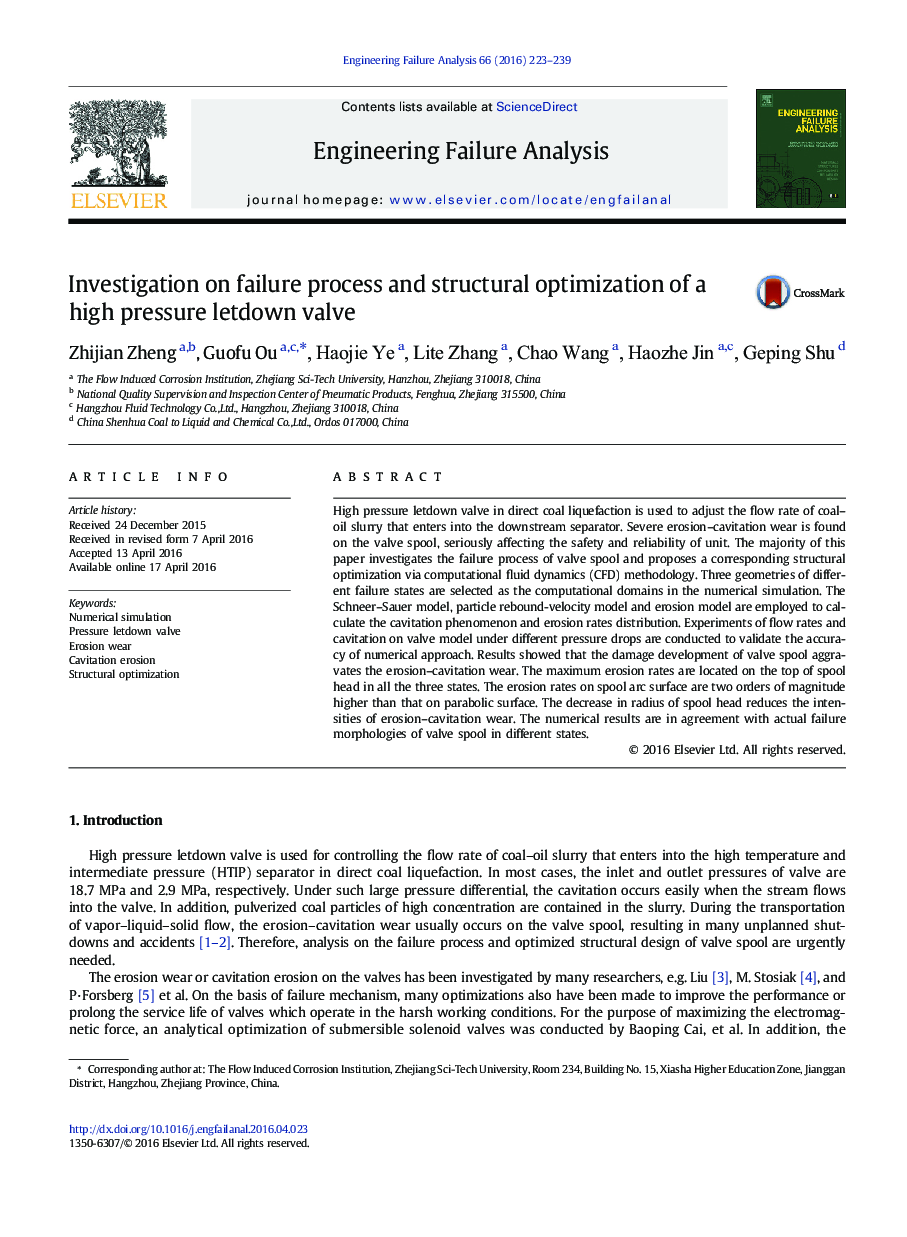| Article ID | Journal | Published Year | Pages | File Type |
|---|---|---|---|---|
| 763262 | Engineering Failure Analysis | 2016 | 17 Pages |
•Numerical investigation on failures process of valve is conducted.•Flow rates and cavitation under different pressure drops are obtained.•Erosion-cavitation wear in the damage process are analyzed.•Structural changes induced by material loss aggravate the failure.•Optimization is proposed by decreasing the radius of spool head.
High pressure letdown valve in direct coal liquefaction is used to adjust the flow rate of coal–oil slurry that enters into the downstream separator. Severe erosion–cavitation wear is found on the valve spool, seriously affecting the safety and reliability of unit. The majority of this paper investigates the failure process of valve spool and proposes a corresponding structural optimization via computational fluid dynamics (CFD) methodology. Three geometries of different failure states are selected as the computational domains in the numerical simulation. The Schneer–Sauer model, particle rebound-velocity model and erosion model are employed to calculate the cavitation phenomenon and erosion rates distribution. Experiments of flow rates and cavitation on valve model under different pressure drops are conducted to validate the accuracy of numerical approach. Results showed that the damage development of valve spool aggravates the erosion–cavitation wear. The maximum erosion rates are located on the top of spool head in all the three states. The erosion rates on spool arc surface are two orders of magnitude higher than that on parabolic surface. The decrease in radius of spool head reduces the intensities of erosion–cavitation wear. The numerical results are in agreement with actual failure morphologies of valve spool in different states.
